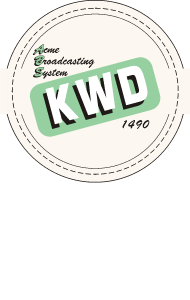
The console (aka mixer, consolette, or just board) is the heart of the radio station. Everything–mic feeds, turntables, remotes–it is all routed through the console. Larger stations and networks had multiple consoles to serve individual studios. In a smaller installation (like KWD) it was more likely that one board would be sufficient. A number of manufactures made them, the best known being Collins, Gates, RCA, and Western Electric. If you’re paying any attention to the photos on this site, you’ve probably figured out that KWD favors RCA equipment. However, I am fond of the other lines as well and I even own a few odd pieces from Gates, Collins, etc.
When broadcasting a live program, a couple of microphones for the musicians were painstakingly located within the studio to best capture the program, whether it be a small orchestra, a dramatic production, a round-table discussion, or what have you. If a radio play was being produced, there might be an additional mic devoted to capturing sound effects. One or more turntables would supply additional sound effects from records and perhaps even music for intros, outros, and dramatic effect.
Programming from the network would be routed through the console as well. Most stations of whatever size were affiliated with a network, and this accounted for a lot of programming. Also, even small stations had equipment for remote broadcasts. This typically consisted of a compact, somewhat simplified mixer and amplifier. These were sometimes separate (as with the RCA OP-6 and OP-7) or integrated into a single unit. KWD owns an RCA BN-2A, which combines the functions of the OP-6 (program amplifier) and the OP-7 (pre-amplifier and 4-channel mixer) in a single 35 pound package. A few bare-bones stations even used these portable units as their main boards.
